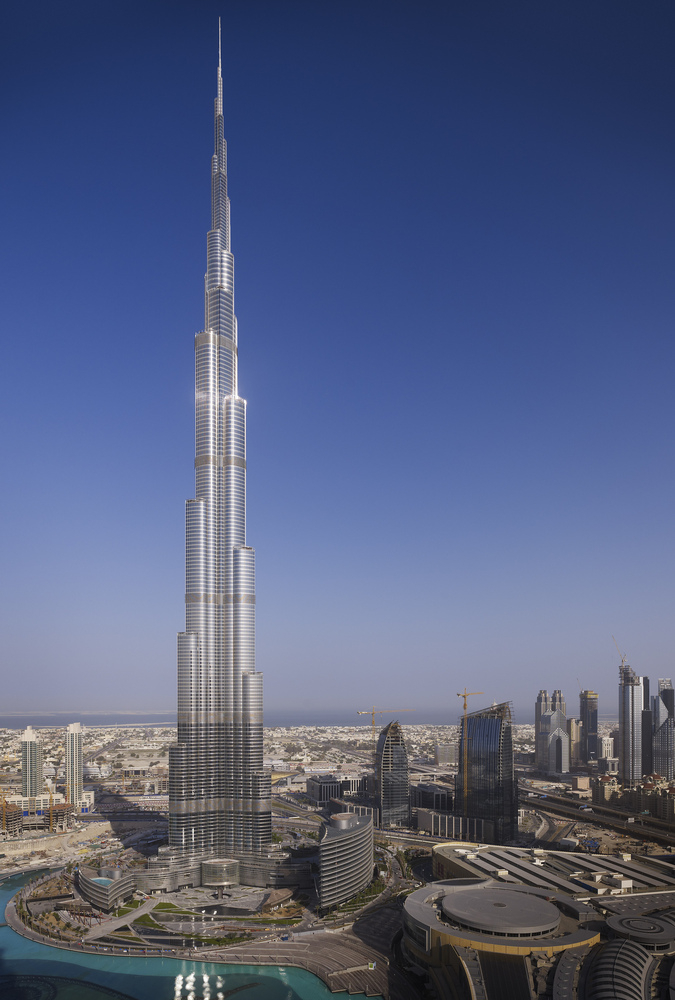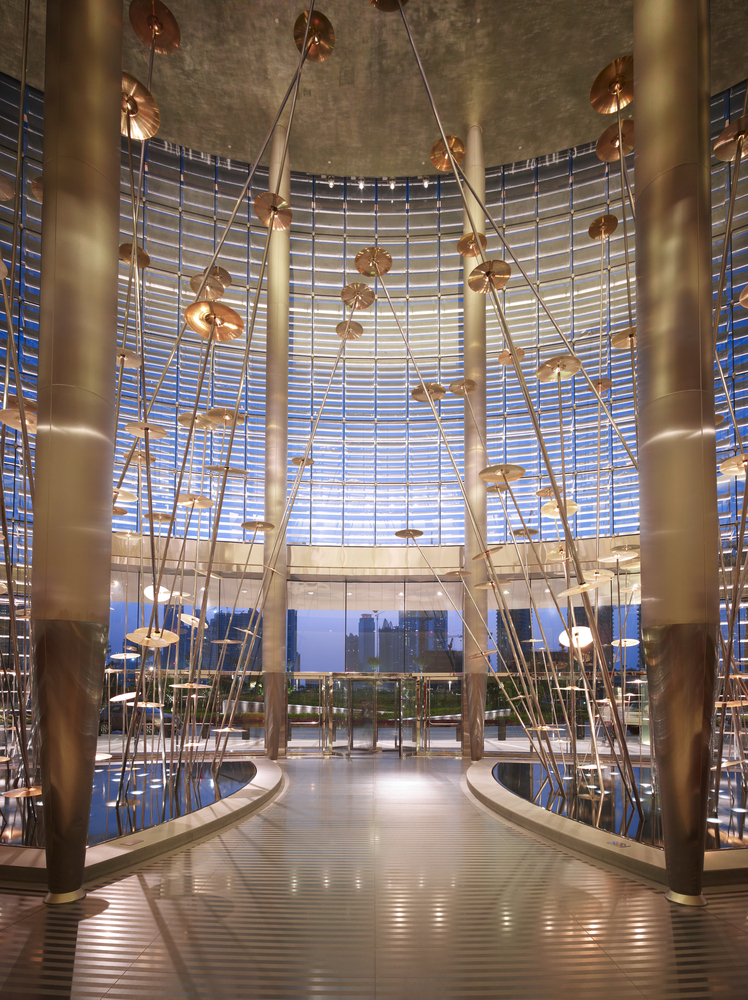Burj Khalifa – Dubai

On July 24, 2007, Burj Dubai became the world's tallest high-rise building, and on September 12, 2007, it became the world's highest self-supporting structure. The Burj Dubai is the world's highest man-made building, surpassing the KVLY-TV Tower in North Dakota and the Warszawa Radio Mast, which was previously the tallest structure ever created. This is the first time since prehistoric times that the world's tallest skyscraper has included residential space.
During its grand opening, the Burj Dubai was renamed Burj Khalifa in honor of the president of the United Arab Emirates, H.H. Sheikh Khalifa bin Zayed al Nahyan. The Arabic word "burj" means "tower."
Although the building's design is similar to the Willis Tower's bundled tube concept, it is structurally distinct and not a tube structure. The structure was turned 120 degrees to reduce the likelihood of being buffeted by desert windstorms. The setbacks of the tower were also changed from counterclockwise to clockwise.
The structure is supported by 192 piles that descend to a depth of more than 50 meters on a concrete and steel platform (164 feet). The foundations are made up of 45,000 cubic meters of concrete with a weight of almost 110,000 tons. The skyscraper was built with around 330,000 cubic meters of concrete and 31,400 metric tons of steel rebar.
Reflective glazing with aluminum and textured stainless steel spandrel panels with vertical stainless steel tube fins make up the exterior cladding. The cladding technology was created to survive Dubai's scorching summers.
Each year, the condensation water collected from the air conditioning system is equivalent to 20 Olympic-sized swimming pools and is used for landscaping.
On levels 43, 76, and 123 of the Burj Dubai, there are sky lobbies. Fitness and spa facilities are available at these locations. A swimming pool and a leisure room are available in the lobbies on levels 43 and 76, respectively, for receptions and other meetings. Level 109 will be the highest residential floor. The 124th floor will be used as an observation deck. On the 125th floor, there is a private club. Engineers working on the project considered adding triple-decker elevators, which would have been the world's first but decided to go with double-decker elevators instead. The elevator's top speed is 600 m/min.
The design by Skidmore Owings & Merrill replaces a proposal in Melbourne a few years ago to reuse the design for Grollo Tower. Adrian D. Smith, FAIA, RIBA design partner at Skidmore Owings & Merrill LLP, designed the project. The building's triple-lobed footprint is inspired by a stylized desert flower common to the area. When looking up at the lobes from near the base, the building's silhouette contains a slight allusion to Islamic architecture's onion domes. The tower is built on a man-made lake that wraps around the tower and provides magnificent views of it.
Location: Dubai
Height: 2,717 ft (828 m)
Floors: 163
Architects: Skidmore, Owings & Merrill LLP (SOM)
Building Function: Hotel, Residential, Office
Completion: 2010











